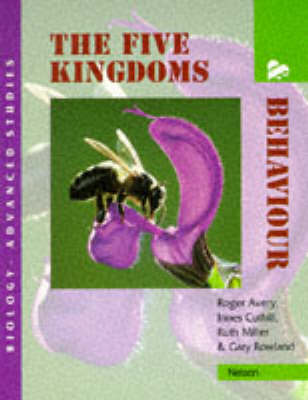Biology Advanced Studies S.
1 total work
Five Kingdoms
by Roger Avery, Innes Cuthill, Ruth Miller, and Gary Rowland
Published 17 November 1994
Part of the Nelson "Biology Advanced Studies", this book covers the five kingdoms (including behaviour). It has been written to cover both the core and options of A-level, AS-level and SCE Higher courses in biology, and relevant vocational courses in Further and Higher Education. Social, economic and environmental aspects are emphasized and enhanced by real-life case studies throughout. Questions aimed at increasing understanding and stimulating discussion are spread throughout the book with suggestions for investigations included. The books in the "Biology Advanced Studies" series provide a blend of accurate information and educational relevance by utilizing two authors on each book. In most cases, one is a practising teacher and examiner, and the other is a specialist from the industry. The major part of this book covers the classification and characteristics of the kingdoms of living things. It also uses behaviour-based case studies throughout the text, where appropriate, to increase reader interest and to show how relevant the topic is.
Some of the case studies covered are: foraging in limpets and dogwhelks; toolmaking and use - chimpazees; woodlice responses to change in the environment; courtship and aggression in sticklebacks; why birds sing; social behaviour in bees and primates; and applications of behavioural studies to animal husbandry. A final chapter provides an overview of the subject of behaviour and covers: the evolution of behaviour; the "selfish" gene; adaptive advantage of living in social groups; stimuli; motivation; role of the central nervous system; hormones and development; taxes, kinesis and signs; and stimuli and signals.
Some of the case studies covered are: foraging in limpets and dogwhelks; toolmaking and use - chimpazees; woodlice responses to change in the environment; courtship and aggression in sticklebacks; why birds sing; social behaviour in bees and primates; and applications of behavioural studies to animal husbandry. A final chapter provides an overview of the subject of behaviour and covers: the evolution of behaviour; the "selfish" gene; adaptive advantage of living in social groups; stimuli; motivation; role of the central nervous system; hormones and development; taxes, kinesis and signs; and stimuli and signals.
